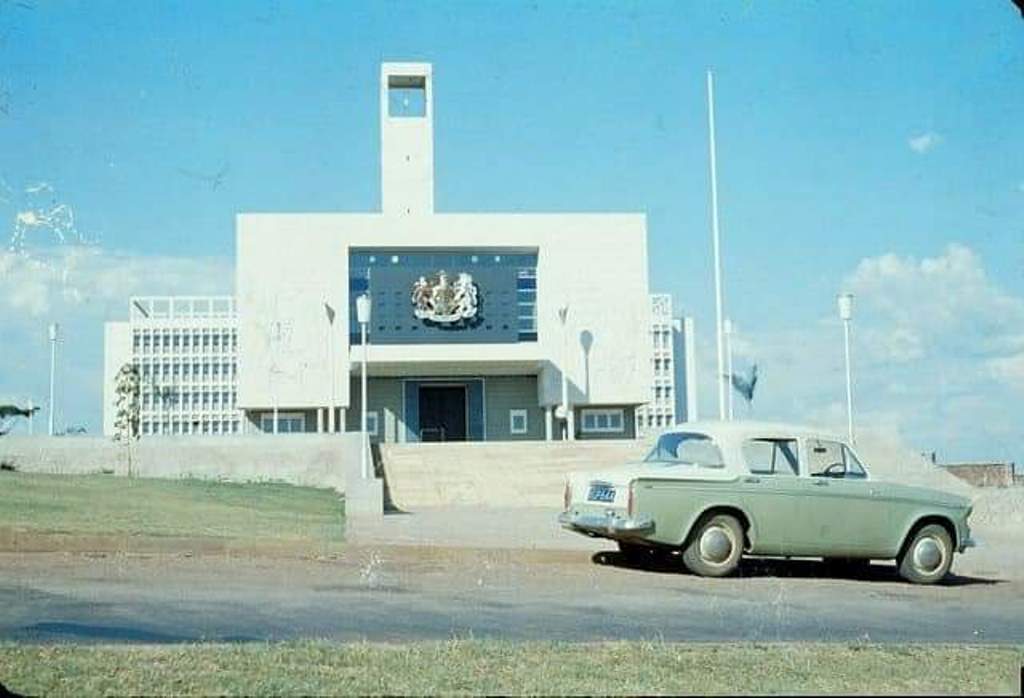Uganda’s Parliament marks 100 years of existence on March 23, 2021. Here is a quick look at the history of Parliament, that has evolved from a council of four, to LEGCO, National Assembly and today’s current House with over 500 members.
The Constitutional framework of the country was first outlined in the Ugandan order council in 1902 and for 18 years, laws were made by the Commissioner and later the Governor after consultation with his senior civil service advisers.
By Order in Council dated 29 June 1920, the Executive Council as well as a Legislative Council (LEGCO) were established.

Parliament of Uganda building situated in the capital Kampala.
The Order gave no right to representation of any individual or group and when the LEGCO first met in Entebbe on 23 march 1921, the Governor presided over a council of four government officials and two unofficial members.
The venue of the meetings had been moved from Entebbe to the High Court in Kampala in 1945.
In January 1958, the first Speaker of the LEGCO, Sir John Bowes Griffin was appointed and thereafter, presided at all the Council meetings.
In 1950, the sittings of the LEGCO were moved to the Town Hall (KCC) in 1950
In 1960, LEGCO sittings moved to current Parliament Building
The general election of 1961 saw representatives directly elected by universal adult franchise from 82 electoral districts including 21 from Buganda. The DP under Benedicto Kiwanuka formed the majority party while the UPC led by Milton Obote, the Opposition.
In September 1961, 48 representatives from Uganda of all shades and interests met at a constitutional conference in London where the shape of the future Constitution of Uganda was agreed upon.
On 01 March 1962, self-government was inaugurated. On that day, the Prime Minister presided over a cabinet and the LEGCO became the National Assembly.

Buganda region opted for an indirect election and the Lukiko nominated 21 representatives to the National Assembly. The Buganda members under Kabaka Yekka struck an alliance with UPC forming the govt with Obote as Premier & Ben Kiwanuka in the Opposition.
In 1962, the National Assembly was formally dissolved and the last general elections before Independence were held.
The Uganda People’s Congress led by Apollo Milton Obote won with 37 seats against 24 for the Democratic Party excluding Buganda.
Uganda Parliament History: A Summary (1902-1962)

- 1902: The Constitutional framework of the country first outlined in the Ugandan Order Council
- 1902-1920: Laws made by the Commissioner and later the Governor after consultation with his senior civil service advisers
- June 29, 1920: Executive Council and the Legislative Council (LEGCO) established by Order in Council
- The Order gave no right to representation of any individual or group
- March 23, 1921: LEGCO first meeting in Entebbe
- The Governor presided over a council of four government officials and two unofficial members
- 1945: Venue of LEGCO meetings moved from Entebbe to the High Court in Kampala
- 1950: Sittings of the LEGCO moved to the Town Hall (KCC)
- January 1958: Sir John Bowes Griffin appointed first Speaker of the LEGCO to preside over all the Council meetings
- 1960: LEGCO sittings moved to current Parliament Building
- 1961: General election held to choose representatives directly elected by universal adult franchise from 82 electoral districts, including 21 from Buganda
- DP under Benedicto Kiwanuka formed the majority party while the UPC led by Milton Obote, the Opposition.
- September 1961: 48 representatives from Uganda met at a constitutional conference in London to discuss future Constitution of Uganda
- March 01, 1962: Inauguration of self-government. The Prime Minister presided over cabinet; LEGCO became the National Assembly
- 1962: National Assembly formally dissolved; last general elections before Independence held
Comments are closed.